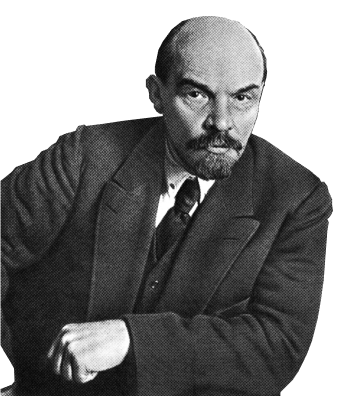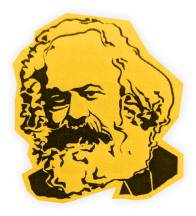Since last May, five polls have placed the Parti Quebecois (PQ) in third place behind the Liberal Party of Quebec as well as the Coalition Avenir Quebec (CAQ). In addition, the party is now second place among francophones and is no longer first in any demographic category. Since the defeat of the 1995 referendum, the PQ has had all sorts of difficulties. Recent developments, such as the last election, the resignation of party leader Pierre Karl Péladeau, the toxic debate surrounding the “identity question”, the failed attempts to seduce Quebec solidaire, and the troubles in the polls all show that turmoil inside the party is deepening. More broadly, this ongoing crisis indicates mounting class tensions in Quebec.
The referendum question
The election of Jean-François Lisée as leader last October marked the beginning of a new era for the PQ. In effect, Lisée won by promising to not hold a referendum on the question of sovereignty before 2022. This is the first time in the party’s history that a leader has been elected on such a promise.
A clever strategist, the new leader understands that the Quebecois population is disinterested in the eternal federal-sovereigntist debate. The fact that the PQ is delaying its “raison d’être” shows the gravity of the crisis in the party. As Sébastien Bovet of Radio-Canada said: “It is in this period of transition that the PQ finds itself. No referendum before 2022? No convergence? No charter of values? Then what? How is the 2017 version of the PQ defined? What is its identity?”
With the referendum question off the table, Lisée’s and his party must find a new way to increase its visibly weakening support. One of the prefered weapons for this purpose is the famous “question identitaire” (question of Quebecois identity).
The Quebecois identity question: “indispensable” or “not a priority”?
The leadership race last summer gave the impression that Lisée was making “Quebecois identity” his key issue. He proposed to launch a campaign to discourage public employees from wearing religious symbols. He also vulgarly attacked his rival Alexandre Cloutier for his imaginary links with the imam Adil Charkaoui. Then, he surfed the wave of Islamophobia affirming that Quebec, “as all other societies, […] must soon debate banning the burqa, the niqab and the burkini in public spaces.” He stated that a PQ government would open a debate on this question. A skilled opportunist, Lisée instrumentalized the debate on the question of Quebecois identity in order to win the leadership race.
However, a week after his victory, he stated that he was moderating his positions in order to find common ground with the other party heavyweights. From one month to the next, Lisée changed his discourse on the question of Quebecois identity.
On November 17th, Lisée stated that questions surrounding identity “are not a priority.” Not much more than a week later, on November 24th, he hardened his position by proposing to ban the wearing of religious symbols for teachers and caregivers. This coincided with a publicity campaign from the CAQ against wearing the chador. Again last February, Lisée stated that the “debate” on the question of Quebecois identity was indispensable. So is it “indispensable” or is it “not a priority”? It seems that Lisée and the PQ do not know which foot to stand on.
But this regular revisiting of the “identity question,” promoted by the right wing of the party, in spite of the charter debacle in 2014, is mainly due to the fact that the PQ is losing more and more ground to the right-wing CAQ. One of the recent polls mentioned above puts the CAQ in first place at 32 per cent – a first since the party was created in January 2012.
The PQ, by toying with the question of Quebecois identity, is trying to guard its right flank in order to stop hemorrhaging support to the CAQ. But as the PQ manoeuvres to protect its right flank, its left flank is being threatened by Quebec solidaire.
The PQ and Quebec Solidaire
Since its inception, Quebec solidaire has always been seen as stepping on the PQ’s toes. This is the reason for the incessant attempts by the PQ in recent years to convince its left-wing counterpart to form some sort of alliance or electoral pact. Recently, the pressure on Quebec solidaire to jump into bed with the PQ has increased immensely.
Since the 2014 election, when Quebec solidaire won 7.6 per cent of the vote, the party generally maintained itself at around 10 per cent in the polls. However, with 2012 student strike leader Gabriel Nadeau-Dubois (GND) joining this past March and became one of the party’s spokespeople, it’s support has risen to around 12-14 per cent in most polls.
Faced with this rising threat, the PQ has adopted a friendlier attitude towards Quebec solidaire, in a maneuver to pressure on the party into an alliance. The PQ even went as far as deciding not to run a candidate in the recent by-election in Gouin, GND’s riding. This maneuver, however, fooled no one, as the PQ was sure to lose against GND and therefore had nothing to lose from not contesting this seat.
Shortly before the Quebec solidaire congress last May, Lisée went as far as launching a sort of ultimatum at Quebec solidaire, urging delegates to make a decision on an alliance with the PQ right away, and not delay until their congress in November. He added that he would not depart from his positions on Quebecois identity and that there would be no Quebec solidaire ministers in a future PQ government. Some alliance!
Quebec solidaire members ended up rejecting, by a large majority, all alliances with the PQ at the congress on the weekend of May 20-22nd. This was enough for the PQ to pull out the heavy artillery, most notably with their mouthpiece, the journal Le Devoir, which made itself the spokesperson for frustrated PQ stalwarts, publishing a flood of articles, editorials and opinion pieces attacking Quebec Solidaire. Lisée stated that the party had “refused to place the common good before its partizan interests.” It seems here that the so-called “common good” is whatever benefits the PQ.
The reality is that the PQ is angry at Quebec solidaire for not throwing them a lifeline. Meanwhile, Quebec Solidaire is increasingly recruiting from the PQ’s left wing. This was confirmed in the Mainstreet poll on June 21st which placed Quebec solidaire at 18 per cent, compared with 22 per cent for the PQ. This poll also placed the parties at parity on the island of Montreal with 19 per cent of the vote respectively. This puts Jean-François Lisée himself in danger of losing his seat to Quebec solidaire in the riding of Rosemont.
During the PQ National Council meeting on June 11-12th, Lisée stated that he wanted to make a “green turn” and take Quebec out of oil and gas. Never mind that it was in fact his party which authorized oil exploration on Anticosti island in 2014. As Quebec solidaire clearly rejected the PQ electoral alliance trap, the PQ is now trying to cut the ground from underneath its rival by presenting a green face in order to seduce left-wing voters. According to the latest polls, it seems as though this maneuver has yet to bear fruit.
The crisis of nationalism: the ground erodes under the PQ
The PQ attempts to combine xenophobic positions with vaguely left-wing positions, at times denouncing Liberal austerity and promising state investment in the economy. The PQ is mad at Quebec Solidaire for taking ground on the left; at the same time they put forward identity politics when they need to attack the CAQ, which is stealing votes on the right. The PQ zigzags to the left and to the right as the ground is eroding underfoot.
These zigzags reflect the crisis of nationalism in Quebec. For decades, when the class struggle was at an ebb, the PQ managed to co-opt the workers movement in a “national coalition” with the aim of making Quebec a country. The real nature of this coalition was revealed by René Lévesque’s vicious attacks on the organized workers in 1982-1983 and with the zero-deficit policy of Lucien Bouchard in 1996. In this tenuous alliance, the working class was subordinated to the diktats of Quebecois capitalism: billionaire Pierre Karl Péladeau’s brief tenure as PQ leader demonstrated this beyond a doubt. During the last period, under the hammer blows of the crisis of capitalism, this coalition is crumbling as the party loses support to the left and right. This reflects the growing class polarization which makes it increasingly impossible to unite those with opposing interests into one national coalition.
At a press conference last December, Lisée admitted that he was fighting on two fronts: “I am fighting on these fronts to stop the division of the vote and build a larger coalition around the Parti Quebecois to obtain a majority government.” Things do not bode well for Lisée: according to the latest polls, between 39-46 per cent of the vote has been claimed by the CAQ and Quebec solidaire.
René Lévesque himself understood that after independence, the PQ would split in two, with one party to the right and one to the left – that is, the party would eventually split along class lines. History has however taken somewhat of a different road: without succeeding in making Quebec a country, the PQ, the standard bearer of the nationalist movement, is losing more and more ground to the left and to the right. In other words, class divisions are disuniting the nationalist movement.
This also demonstrates that we are seeing the outlines of an increasingly polarized society in Quebec. Under the blows of the crisis of capitalism, more and more people are rejecting the traditional parties and the politicians who defend the status quo and the “centre.” This growing polarization of the population, to the left and to the right, is a worldwide process. In Quebec, the PQ is the first victim of this polarization. But the other traditional party, the Liberal Party of Quebec, is just as, if not more, hated and discredited. If a real alternative was posed against these two parties of austerity, the Liberals would massively lose support.
As the crisis of capitalism deepens, the class struggle continues to tear apart the PQ. The 2012 student strike, the public sector strike of 2015, and the more recent construction workers’ strike, are just a few examples demonstrating that class struggle is making a comeback. Many people are probably disappointed to see the CAQ and the Liberals dominate the polls. But the stage is set for a huge turn to the left, if there was a genuine force that boldly represented and fought for the interests of the working class.
The rise of Quebec solidaire represents a fantastic opportunity. Its refusal to ally with the PQ opens the door for the party to rise as an expression of the growing anger of workers and youth in Quebec. This was a good decision. The PQ is dying – let it die! But in order to succeed, it is not enough for Quebec solidaire’s leaders to simply state vaguely that the party is “progressive” or “left-wing.” In order to really canalize the discontent of the workers, the party must speak using clear and bold language, attacking the capitalist establishment. Quebec solidaire must become a party of the working class.
In order to take full advantage of the rising class struggle, to defeat the parties of austerity, Quebec solidaire must continue to reject any form of alliance or coalition with the PQ and fight audaciously, in words and with actions for a socialist program. This is the only way to truly inspire and enthuse the millions of workers and youth in Quebec who hate the establishment and are looking for a solution to the capitalist status quo.

